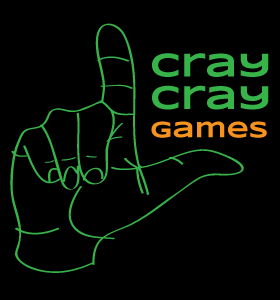Cray Cray Games’ Phil Cartagena spent April and part of May helping Jordan Pailthorpe of the Emerson Engagement Lab and fellow game designer, Sarah Osborn, teach Emerson students the basics of game design as applied to a serious topic.
As part of the First Year Writing Program, Jordan’s class, “Game Design for Social Change,” partnered with Emerson’s Violence Prevention and Response Director, Dr. Melanie Matson, to create games focusing on Bystander Intervention.
Phil and Sarah assisted by bringing real-world game design experience to the classroom by helping students envision ways to translate a complex theme into a game that would be fun while also educational.
“Upon hearing this class’ challenge, I was concerned that games couldn’t really be produced that would manage the balance between simultaneously handling the subject matter in a sensitive manner while also making something fun that might have a life beyond the requirement of a single class. I’m happy to say that at the class’ conclusion, there were 4 games that, with very little additional work and polish, could be used in a formal way to introduce incoming students to this issue in a way that is actually fun.”
The class was broken into 4 groups and their games were shown at the First Year Writing Program’s 7th Annual Showcase of Student Work on April 30, 2015. The games that were presented were:
- Bystander Quest: a game that uses Twine to take a player through (Zork-esque) interconnected scenarios and puts them in the position to witness and interact with the scenario’s environment and non-player characters (NPCs).
- Danger Zone:is a location-based objective game that introduces players to potential situations that literally puts the question, “What do you do?” to players for a given scenario.
- Electio: a game that encourages location (campus) exploration where there are opportunities for positive and negative encounters throughout the area. This game has connectivity between players because if any one player is reduced to 0 “experience points,” everyone loses. This game can give incoming students a light introduction to student life while also shining the light on potential scenarios that could happen while enabling a safe environment to make decisions and discuss the repercussions.
- Reactionary!: An Apples to Apples-like game that presents situations that put players in the role of bystander and they must play Response Cards that are appropriate. They also have Debate Chips (replenishable every 4 rounds) that encourage player debate after the round’s judge picks a winning response.

Leave a Reply
You must be logged in to post a comment.